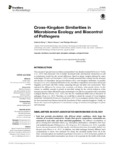Use este identificador para citar ou linkar para este item:
http://www.alice.cnptia.embrapa.br/alice/handle/doc/1032834Registro completo de metadados
| Campo DC | Valor | Idioma |
|---|---|---|
| dc.contributor.author | BERG, G. | pt_BR |
| dc.contributor.author | KRAUSE, R. | pt_BR |
| dc.contributor.author | MENDES, R. | pt_BR |
| dc.date.accessioned | 2016-01-04T11:11:11Z | pt_BR |
| dc.date.available | 2016-01-04T11:11:11Z | pt_BR |
| dc.date.created | 2016-01-04 | pt_BR |
| dc.date.issued | 2015 | pt_BR |
| dc.identifier.citation | Frontiers in Microbiology, Lausanne, v. 6, article 1311, 2015. | pt_BR |
| dc.identifier.uri | http://www.alice.cnptia.embrapa.br/alice/handle/doc/1032834 | pt_BR |
| dc.description | Abstract: The concept of "gut and root microbiota commonalities" was already presented by Ramírez-Puebla et al.(2013); they discussed a lot of similar functional traits, host-bacteria interactions as well as evolutionary trends but also several differences. Based on deeper insights obtained by omics technologies, Mendes and Raaijmakers (2015) recently presented their concept that the structure and function of rhizosphere and gut microbiomes showcross-kingdom similarities. In parallel, Hacquard et al. (2015) analyzed similarities of the microbiota composition across plant and animal kingdoms and found only little overlap comparing fish gut and plant root communities. They explained the differences by various start inoculants and abiotic, niche-specific factors. In this context, to establish concepts is pivotal in microbial ecology for the critical evaluation of the immense amount of data obtained by omics technologies, not only for conceptual work in microbial ecological theories(Prosseretal.,2007), but also for translational fields such as biocontrol of pathogens (Bergetal.,2013). Therefore, we would like to extend the concept of "cross-kingdom similarities" presented by Mendes and Raaijmakers (2015) to an ecological context, which is shared for host-associated microbiomes beyond the boundaries of their respective kingdoms. Finally, we discuss the impact and implications of microbiome ecology on biocontrol of pathogens in plants and in humans. | pt_BR |
| dc.language.iso | eng | eng |
| dc.rights | openAccess | eng |
| dc.subject | Ecological theories | pt_BR |
| dc.title | Cross-kingdom similarities in microbiome ecology and biocontrol of pathogens. | pt_BR |
| dc.type | Artigo de periódico | pt_BR |
| dc.date.updated | 2016-02-26T11:11:11Z | pt_BR |
| dc.subject.thesagro | Rizosfera | pt_BR |
| dc.subject.thesagro | População microbiana | pt_BR |
| dc.subject.thesagro | Bactéria | pt_BR |
| dc.subject.thesagro | Controle biológico | pt_BR |
| dc.subject.nalthesaurus | Microbiome | pt_BR |
| dc.subject.nalthesaurus | Biological control agents | pt_BR |
| dc.subject.nalthesaurus | Rhizosphere | pt_BR |
| dc.subject.nalthesaurus | Pathogens | pt_BR |
| riaa.ainfo.id | 1032834 | pt_BR |
| riaa.ainfo.lastupdate | 2016-02-26 | pt_BR |
| dc.contributor.institution | GABRIELE BERG, Graz University of Technology; ROBERT KRAUSE, Medical University of Graz; RODRIGO MENDES, CNPMA. | pt_BR |
| Aparece nas coleções: | Artigo em periódico indexado (CNPMA)  | |
Arquivos associados a este item:
| Arquivo | Descrição | Tamanho | Formato | |
|---|---|---|---|---|
| 2015AP30.pdf | 364,83 kB | Adobe PDF |  Visualizar/Abrir |









